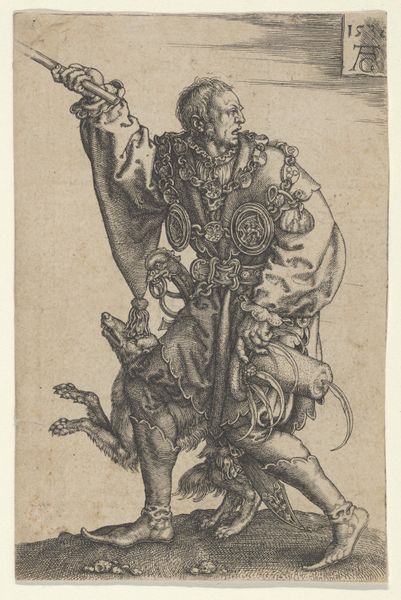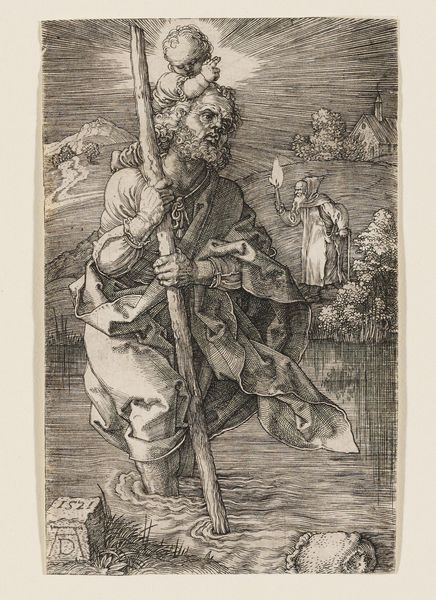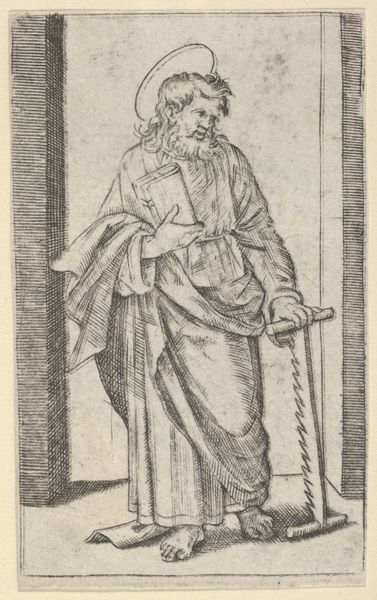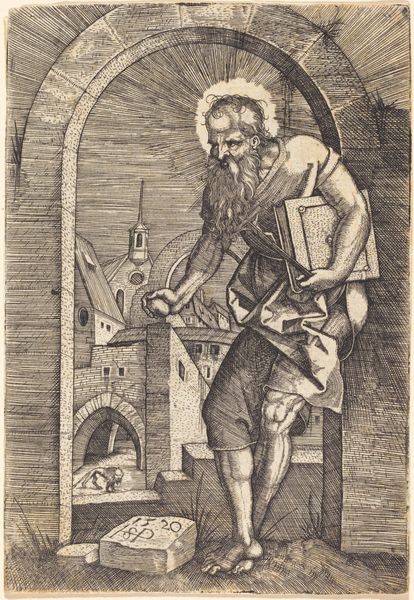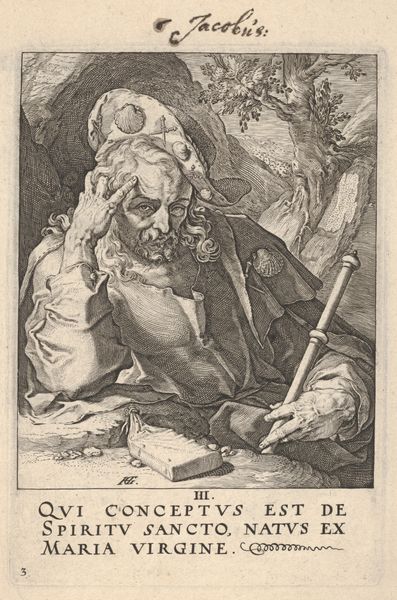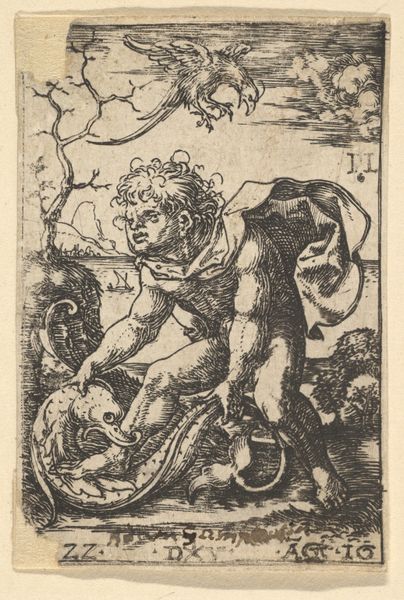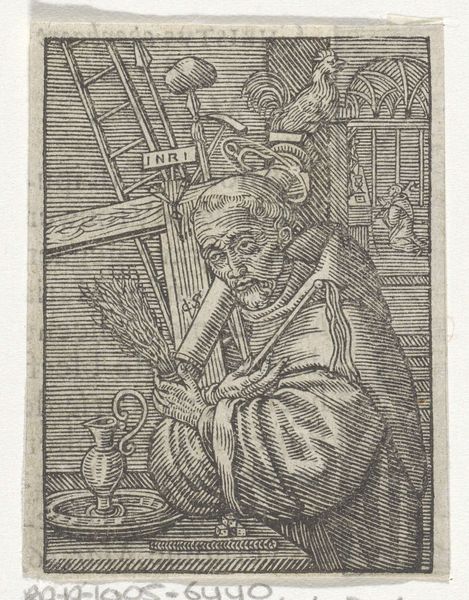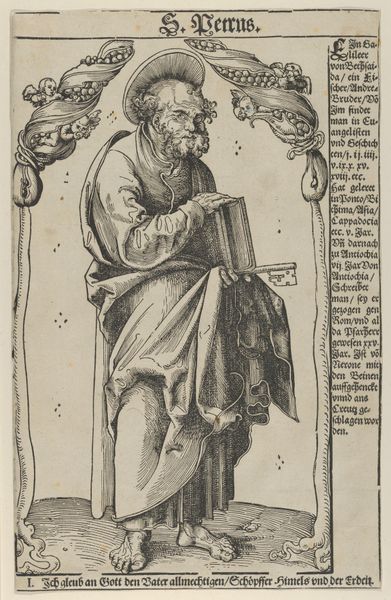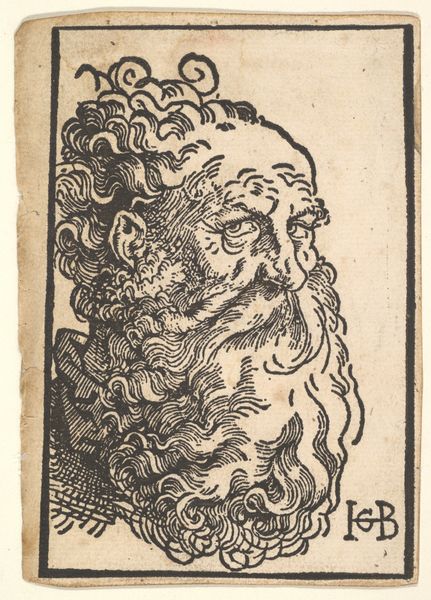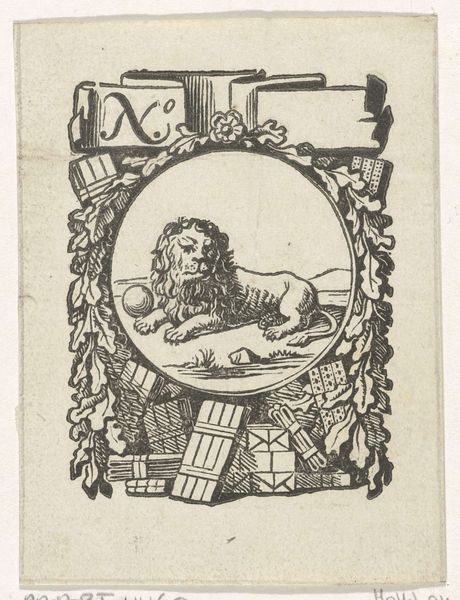
Bust of Saint Peter, from the Large Series of Wittenberg Reliquaries; verso: Martin Luther (1548) 1509
0:00
0:00
drawing, print, woodcut, engraving
#
portrait
#
drawing
# print
#
woodcut
#
northern-renaissance
#
engraving
Dimensions: Sheet: 6 × 4 1/2 in. (15.3 × 11.5 cm)
Copyright: Public Domain
Curator: Lucas Cranach the Elder created this woodcut engraving around 1548. It's entitled "Bust of Saint Peter, from the Large Series of Wittenberg Reliquaries," and cleverly, the verso depicts Martin Luther. Editor: It's striking. The heavy lines give Saint Peter a rather stern appearance, despite the softness implied by the curly hair and beard. The density of the key imagery, that’s clearly symbolic of power and access, feels almost overwhelming. Curator: Well, consider the period. Cranach was deeply involved with the Reformation, and the Wittenberg Reliquaries were commissioned by Frederick the Wise. They represent a fascinating intersection of religious belief and political maneuvering. St. Peter, holding those keys, is presented at a critical juncture. It invites questions about power, representation, and how the Church visualizes its authority during challenges to its position. Editor: I see how that plays out, but there is something still inherently oppressive in how literal that key imagery is visualized. Those enormous, stylized keys—do they grant liberation, or are they more indicative of restrictive rules? Looking at this today, particularly regarding current conversations about accessibility and dismantling institutional power, it has an intense, unsettling edge. Curator: That's a compelling interpretation. In Cranach’s context, however, there's also an element of defiance against what he viewed as papal corruption. These images functioned within a complex web of alliances, theological arguments, and, yes, visual propaganda. We cannot view this image isolated from the Reformation's socio-political disruption and dissent, can we? Editor: Absolutely. And placing Saint Peter and Martin Luther in dialogue, even if implicitly through the recto/verso presentation, encourages questioning conventional religious authority in the social order, highlighting this conflict within the political climate. It is all pretty provocative considering how subversive this artwork was, even for the elite social structures. Curator: Indeed, analyzing the artwork in historical context helps us navigate its original purpose, as well as comprehend its visual strategy of communicating to both the followers of the Church and reformers alike. Editor: Ultimately, these layers of power struggles depicted and implied across both images continue to make this such a captivating and remarkably relevant artifact.
Comments
No comments
Be the first to comment and join the conversation on the ultimate creative platform.
